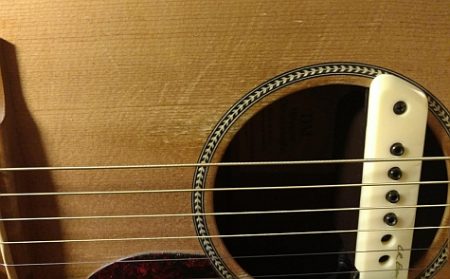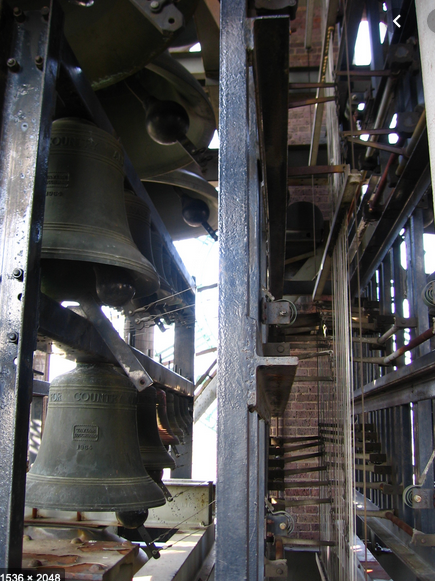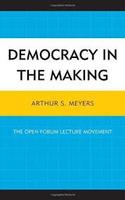“On the whole, men are more good than bad; that, however, isn’t the real point. But they are more or less ignorant, and it is this that we call vice or virtue; the most incorrigible vice being that of an ignorance that fancies it knows everything and therefore claims for itself the right to kill. The soul of the murderer is blind; and there can be no true goodness nor true love without the utmost clear-sightedness.” (sans toute la clairvoyance possible) ~ Albert Camus from one of the more memorable passages of The Plague, in which he addresses the volunteer sanitary groups put together by citizens to clean the town’s overloaded hospitals.
British-Trinidadian dub poet Roger Robinson wins TS Eliot prize
 Roger Robinson, the British-Trinidadian dub poet, has won the prestigious TS Eliot prize on his first nomination for his collection A Portable Paradise.
Roger Robinson, the British-Trinidadian dub poet, has won the prestigious TS Eliot prize on his first nomination for his collection A Portable Paradise.
The only poetry award judged solely by established poets, the £25,000 TS Eliot prize has been described by the former poet laureate, Sir Andrew Motion, as “the prize most poets want to win”.
Source: British-Trinidadian dub poet Roger Robinson wins TS Eliot prize | Books | The Guardian
When you’re a carillonneur….
When you’re a carillonneur you’re either up-and-coming, or you’re renown.
Advice to a budding musician
 The more we play, the more we become the instrument and the less it feels like an instrument and the more it becomes an extension of ourselves and the more the music becomes an expression of us and the less it sounds like an instrument we are playing and the more it sounds like something we are part of — a body we have joined in which to rejoice almost as a parishioner in a church, or a congregation, minister, and choir. Our fingers become the ripples in the water rather than merely the things making waves. The sound a reflection of the trees in the water rather than a leaf floating upon it. Musician, score, instrument, sound become one.
The more we play, the more we become the instrument and the less it feels like an instrument and the more it becomes an extension of ourselves and the more the music becomes an expression of us and the less it sounds like an instrument we are playing and the more it sounds like something we are part of — a body we have joined in which to rejoice almost as a parishioner in a church, or a congregation, minister, and choir. Our fingers become the ripples in the water rather than merely the things making waves. The sound a reflection of the trees in the water rather than a leaf floating upon it. Musician, score, instrument, sound become one.
Don’t Turn Away From the Art of Life | The New York Times
 Arnold Weinstein, a professor of comparative literature at Brown University, and the author, most recently, of “Morning, Noon and Night: Finding the Meaning of Life’s Stages,” writes in The New York Times that “our data-driven culture bears much of the blame for the decline of the humanities in higher education.”
Arnold Weinstein, a professor of comparative literature at Brown University, and the author, most recently, of “Morning, Noon and Night: Finding the Meaning of Life’s Stages,” writes in The New York Times that “our data-driven culture bears much of the blame for the decline of the humanities in higher education.”
But it’s not just in higher education where the humanities are declining because of the data-driven culture, or electronics-driven culture, or computer-driven culture, or Facebook-culture, and, in general, the soon-to-be-the-revived Beat culture, because we’re all tired of all the information, all the data, the games (video), the Facebooking, and the separating-ness of computers in general.
Humanities are declining in our minds and in our hearts, where the humanities once originated. The arts are atrophying in today’s society, particularly in Western countries where computers are ubiquitous. If it’s not a computer in someone’s hand, then it’s a smart phone, which can do more than a personal computer could do in the mid-1980s, which might sound to some like the stone age, but, it was only 30 years ago and we were carrying our data around on floppy disks and, soon, 3.5″ floppy disks.
If you find yourself spending a couple to a few hours a day on your personal computer, not including the time you spend on it doing just things for your job, and that you still have a hard time carving out time for your family, for your exercise, for reading, or enjoying things like art and nature, then it is happening to you.
There is so much we want to do. There are so many things we could do. This is proven everyday millions and millions and millions of times, when so many distractions keep so many people from doing what they really want to do.
The important thing to do is
- Decide what it is that you want to do with your life. Do you want to write a book? Paint paintings? Take photographs? Learn how to knit? Learn to use a sewing machine and make clothes. In this exercise you MUST choose one thing that is most important to you today.
- Do something toward that dream or goal or whatever it is before turning on Facebook or looking at cat videos on YouTube.

It’s easy. It sounds easy and it IS easy. You might have to ask yourself what you enjoy more, watching videos on YouTube, or visiting the Museum of Modern Art and looking at the expanse of Matisse’s Dance painting in person. If you’ve never seen it and can get to the museum, I urge you to go. It’s nothing like you see when you look at it on a computer.
Source: Don’t Turn Away From the Art of Life | The New York Times
Watch the 72-minute trailer for the longest movie ever made
Longest movie ever made. On Dec. 31, 2020, Swedish artist and filmmaker Anders Weberg will release his “Ambiancé,” a 720-hour movie that will take the title of the longest movie ever made. If you can take a month off to watch it, you will find that “space and time is intertwined into a surreal dream-like journey beyond places,” Weberg writes. But you don’t have to wait until 2020 for the pleasure. Weberg is rolling out three trailers over the next several years. The “short teaser” is 72 minutes long (watch it here). Next up is a “short trailer” that’s 7 hours and 20 minutes long in 2016. And the final, “longer trailer” will appear in 2018 and run — you guessed it — 72 hours. Then, in 2020, the final cut will “be shown in its full length on a single occasion synchronised in all the continents of the world and then destroyed.” Phew.
Armenian-American Artist Wins Posthumous Fame
Pinajian’s work hangs on the well-lit walls of a SoHo gallery. Leading art historians say that, at his best, he ranks among America’s finest abstract expressionists. His estate has been appraised at $30 million. After several kind twists of fates, Pinajian has been vaulted out of obscurity and is now gaining improbable posthumous fame.
The first twist came with a real estate venture by a man named Thomas Schultz. It was 2005 when Schultz stumbled upon the cottage in Bellport, New York that was the longtime home of Pinajian and his sister.
“I came into the house to look at it with the purpose of figuring out if it was a good house to flip i.e. to buy and resell for profit and I walked among all of this art. I was intrigued by it because it was so vast. I knew what I was looking at was someone’s life’s work.”
For more on this story, visit: Armenian-American Artist Wins Posthumous Fame.
Library Democracy Forum with Arthur S. Meyers, 2 p.m. Sat. Feb. 2
In 1908 community learning took a new direction in Boston and spread across the country as the Open Forum Lecture Movement. Locally planned, transdenomenational lectures included Q&A and were characterized as “the Striking of mind upon mind”.
Generate some light with other audience members as author Arthur S. Meyers explores the power of community conversation.
Reviews of Democracy in the Making:
Meyers’ original and exciting investigation [and] deft, nuanced analysis….thoroughly explores the movement’s strengths and weaknesses, providing insights that will be valuable to historians—and to all who seek to develop inclusive solutions to social problems.
(Nancy C. Unger, associate professor of history, Santa Clara University; author, Fighting Bob La Follette: The Righteous Reformer )
…[A] clearly-drawn narrative….connect[ing] this non-sectarian, semi-secular movement to the Chautauqua and Lyceum movements of earlier generations.
(Richard D. Brown, Board of Trustees Distinguished Professor of History, emeritus, University of Connecticut )
I recommend this book highly for students of adult education and for public officials and civic leaders who want a model of public discourse for civil conversation in a time of polarization.
(Harold W. Stubblefield, professor emeritus, Virginia Polytechnic Institute and State University )
For more on this story, visit: Library Democracy Forum with Arthur S. Meyers – Eventbrite.
Fracking lobbyists prepare case against Matt Damon’s Promised Land
Energy in Depth prepares ‘cheat sheet’ of pro-fracking talking points before release of Gus Van Sant drilling-rights drama
For more on this story, visit: Fracking lobbyists prepare case against Matt Damon’s Promised Land | Environment | guardian.co.uk.
Connecticut Poets Tap State’s Heart, Vitality
Connecticut poets tap state’s heart, vitality
Though it may not be the first thing we associate with Connecticut, poetry has been a vital part of our lives in for more than 200 years. It has inspired us or warned us, and on many occasions it has sharpened our thoughts or warmed our hearts. One of Connecticut’s 19th-century poets, James Abraham Hillhouse of New Haven, claimed in a talk he gave in 1836 that poetry offered an antidote to America’s addiction to “Politics and the Love of Money.”
Hillhouse’s teacher, Yale College President Timothy Dwight, offered sage advice in his long poem “Greenfield Hill”: “Hire not, for what yourselves can do; / Nor, ’till to-morrow’s light, delay, / What might as well be done to-day.” Other poets of the post-Revolutionary era celebrated the new nation in glowing patriotic verse, and through their words shaped the spirit of an emerging country. Joel Barlow’s comic “The Hasty Pudding,” a poem in praise of what we call mush or polenta (depending on where we eat it), was extremely popular.
For more on this story, visit: Connecticut Poets Tap State’s Heart, Vitality – Hartford Courant.
Isaac Canady’s Ballpoint of View | Chris Arnott, Daily Nutmeg
“I tend not to like galleries,” Isaac Canady confesses. But he’s created one anyway. His exhibition space, not to mention the art studio where he draws and creates his singular and spiritual pen-and-ink works, is the sidewalks and coffee shops of New Haven.
Canady’s a familiar face to countless downtown pedestrians. Now he’s also attracting attention while on breaks from his job at Elm City Market in the 360 State Street complex, where he works from 7 a.m. to 3 p.m. in the bakery section. During those breaks, Canady finds a seat in the dining section over by the market’s hot bar and salad bar.
For more on this story, visit: Ballpoint of View | Daily Nutmeg.
10 (More) Amazing Videos About the Creative Process | 99u
Just like the rest of us, creatives like Milton Glaser, Louis C.K. and Ray Bradbury struggle when going through their process. No really, we have proof.
In a sequel of sorts, we’ve assembled videos from musicians, stand-up comedians, writers, and others to help give us a look inside the inner-workings of some of the world’s most talented creatives.
Jazz Pianist Bill Evans strips away the glamor of creative work and emphasizes the need to have a love for the nitty-gritty. This clip is from the 1966 film The Universal Mind of Bill Evans.And lots more here: 10 (More) Amazing Videos About the Creative Process :: Articles :: 99U.
The House the Herman Joshua Wallace Built
In 1972, New Orleans native Herman Joshua Wallace b. 1941 was serving a 25-year sentence for bank robbery when he was accused of murdering an Angola Prison guard and thrown into solitary confinement. Many believed him wrongfully convicted. Appeals were made but Herman remained in jail and—to increasingly widespread outrage—in solitary. Years passed with one day much like the next.
Then in 2001, Herman received a perspective-shifting letter from a Jackie Sumell, a young art student, who posed the provocative question: “What kind of house does a man who has lived in a six-foot-by-nince-foot cell for over 30 years dream of?” Thus began an inspired creative dialogue, unfolding over hundreds of letters and phone calls and yielding a multi-faceted collaborative project that includes the exhibition “The House That Herman Built.”
For more on this story, visit: swissmiss.









